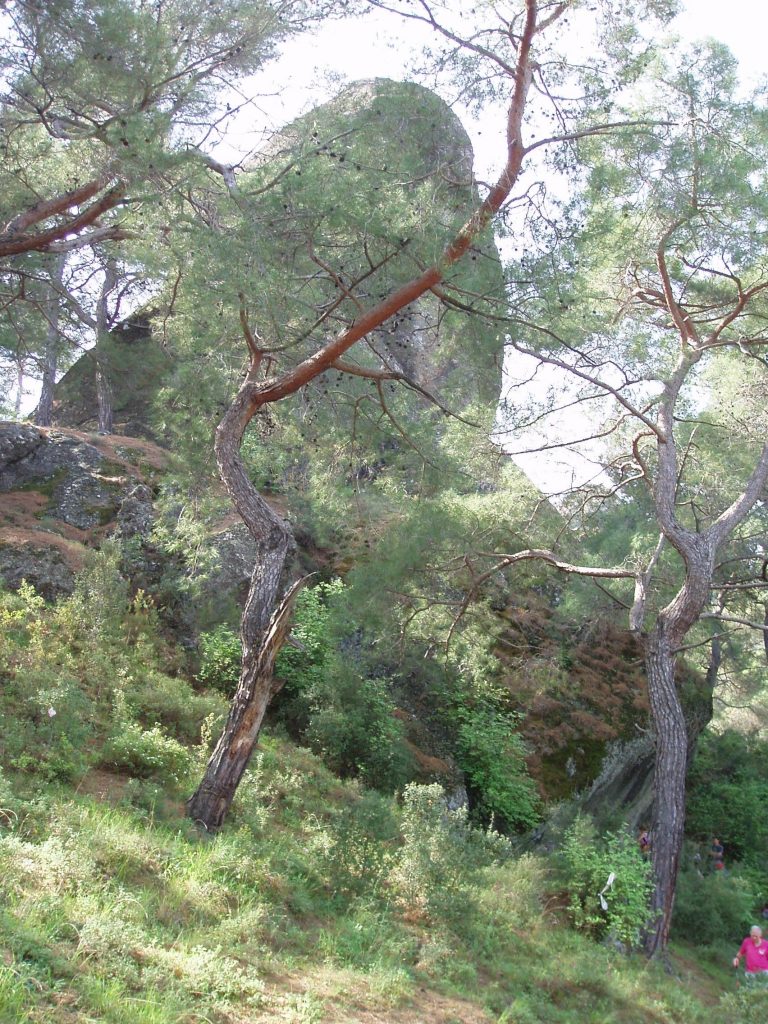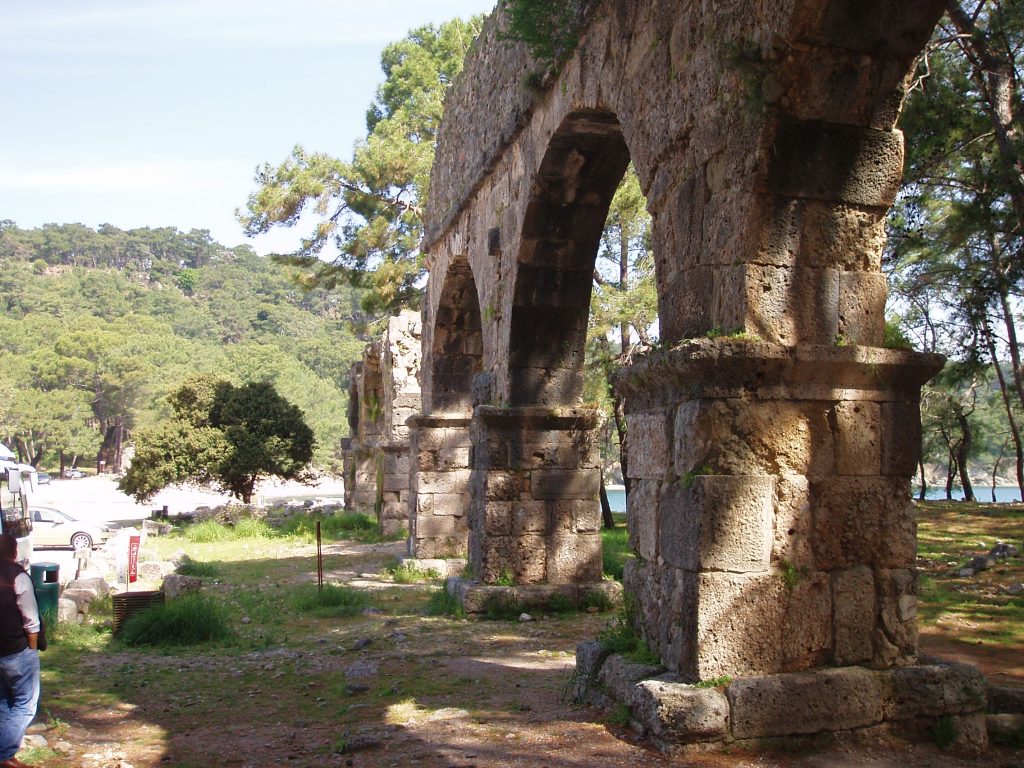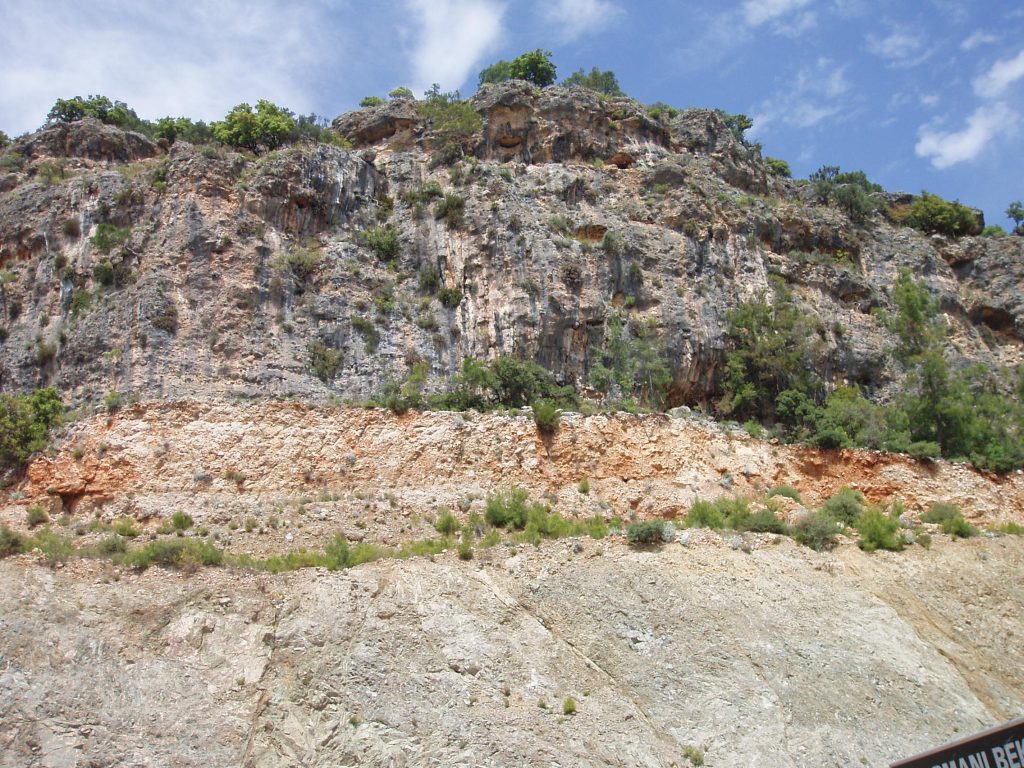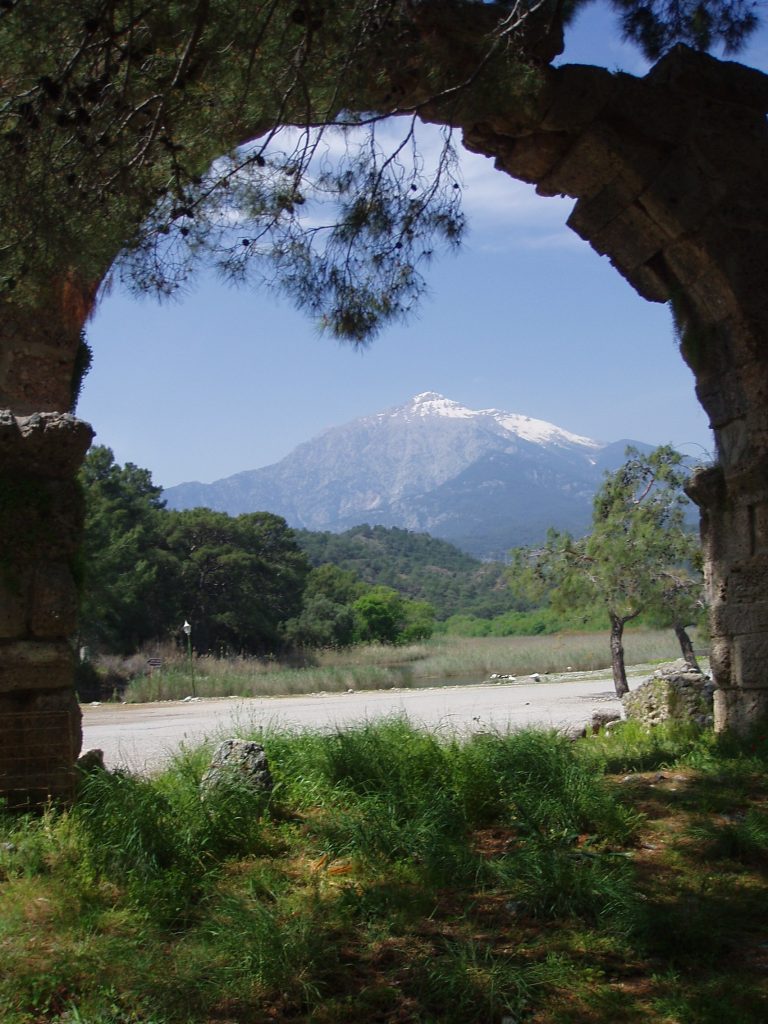by David R. Bridgland
Good morning everyone
Thank you to Alison for an excellent summary of the day. I am sending a few of my pictures from previous trips.

First, the geomorphological gem that we call the ‘Black Rock’, a residual mass that shows that the crystalline ophiolite is significantly more resistant to denudation than the limestone country rock. A highlight for me (I am so predictable!) is the cemented gravel (conglomerate) that has been used as a building stone at Phaselis.

In the view of the magnificent aqueduct you can see a block of this near the base of the nearest pier (you might need to enlarge the view and ‘home in’ on it). I think this is a fairly recent ‘terrace gravel, perhaps a marine terrace (given the coastal setting) cemented by travertine, precipitation of which is everywhere hereabouts.

The third image shows the nearby outcrop of what might well have been the local source of this building stone. You will have noticed that more exotic and higher-grade stone, presumably shipped in, has been used for the more ‘showy’ structures (marbles of various types).

Finally, an ‘arty’ view through an arch of the aqueduct, of the surprisingly snow-covered (in April 2014) mountain – do we know its name Alison?
Looking forward to that fish lunch!
All best
David